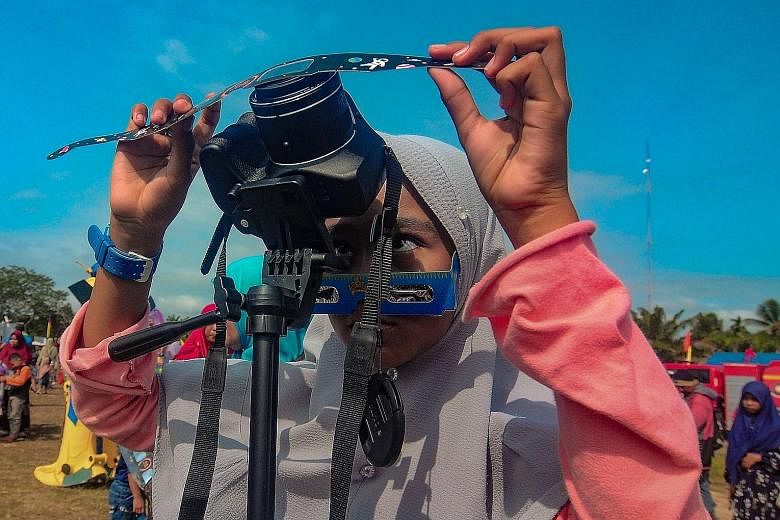Skywatchers from Saudi Arabia and Oman, to India and Singapore were treated to a rare "ring of fire" solar eclipse yesterday.
Annular eclipses occur when the Moon is not close enough to the Earth to completely obscure the Sun, leaving a thin ring of the solar disc visible.
While this type of eclipse occurs every year or two, it is visible from only a narrow band of Earth each time and it can be decades before the same pattern is repeated.
Depending on weather conditions, this year's astronomical phenomenon was set to be visible from the Middle East across southern India and South-east Asia, before ending over the northern Pacific.
Mr Alexander Alin 45, a geophysicist from Germany, travels around the world following eclipses.
"It's only two minutes, but it's so intense that you talk about it with your friends, family for the next month," Mr Alin said.
In southern India, people gathered on beaches in Tamil Nadu to watch the event.
The eclipse even affected cricket, with play delayed by two hours in a first-class match between Mumbai and Rajkot.
The eastern state of Odisha declared a public holiday.
But in New Delhi, cloud and pollution blocked the view, and Prime Minister Narendra Modi tweeted his disappointment, although only a partial eclipse would have been visible that far north.
"Like many Indians, I was enthusiastic about solar eclipse 2019," Mr Modi said.
"Unfortunately, I could not see the sun due to cloud cover, but I did catch glimpses of the eclipse in Kozhikode and other parts on live stream."
In Indonesia, hundreds gathered outside Jakarta Planetarium with protective glasses supplied by the planetarium.
"I could see the eclipse this morning and I'm very excited to see the peak, though now, it is cloudy," said Ms Chandra Ayu Dewi, 39, who arrived at 7am with her children.
Outside the narrow band where the "ring of fire" effect can be observed, skywatchers would see a partial solar eclipse.
The next annular eclipse in June next year will be visible within a narrow band from Africa to northern Asia.

